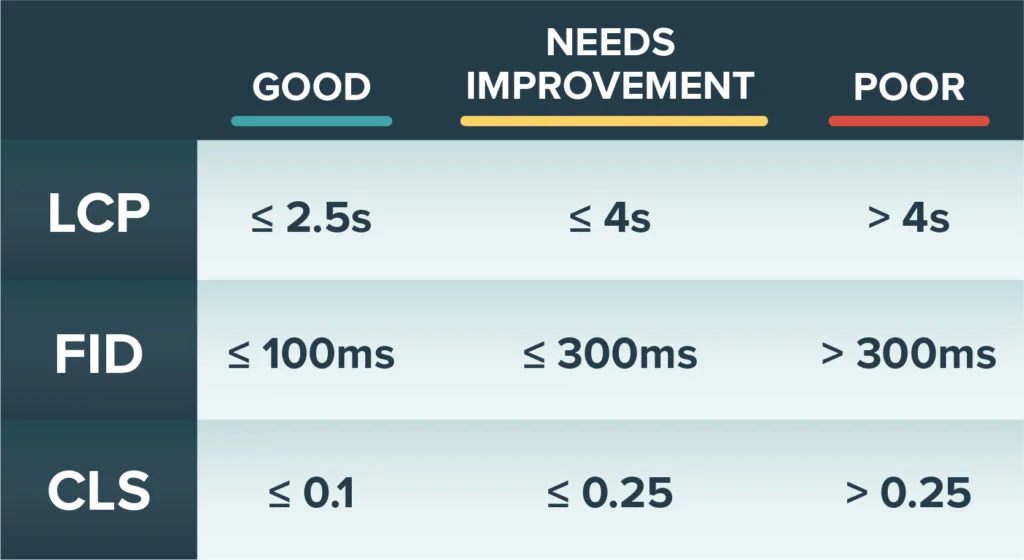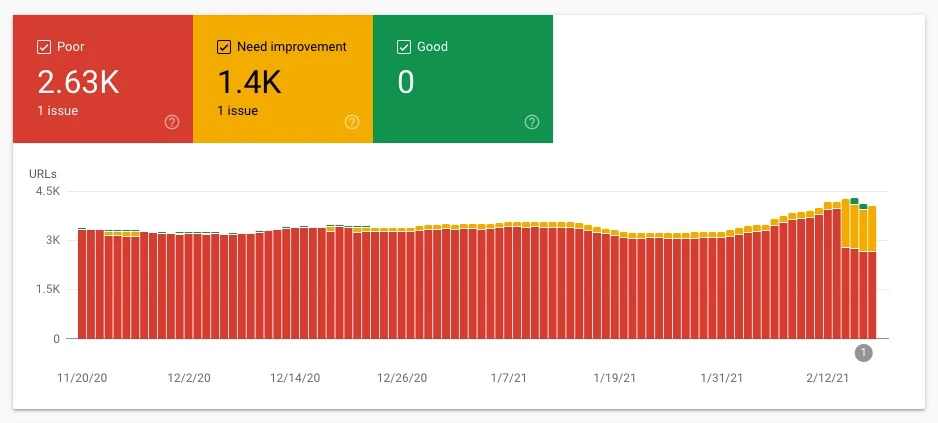Google Announces Core Web Vitals Change: Less (Than) is More


Google quietly announced a small change in how it calculates Core Web Vitals data in Search Console this week.
This change in Google’s calculation methods for these all-important pagespeed metrics is so subtle you could easily miss it.
As of February 17, 2021, instead of using “less than” as a boundary for web page scores, Google is using “less than or equal to.”
While we’re talking about fractions of a second here, this entire exercise is about fractions of seconds and every little bit helps.
Google says this tiny adjustment can result in publishers seeing changes from red to yellow or yellow to green indicators.
Here’s the official wording, which we’ll translate below.
“The metrics defining the boundaries for LCP, FID, CLS, which used to be < (less than), are now defined as <= (less than or equal to). Therefore you might see a change in statuses (for the better) in this report.”
Basically, instead of being flagged as “Needs Improvement” if you’re right on the number, Google now gives you the green light.
Here are the boundaries:

If Google loves one thing in this world, it’s acronyms. If it loves two things, it’s acronyms and performance metrics.
Core Web Vitals, integrated into Lighthouse 6 in mid-2020, delivers on both fronts! They are comprised of three important metrics:
These figures have been the targets all along, but now that “equal or less than” puts you in the green, at least you have the extra millisecond(s).
In other words, scores of 2.5 for LCP, 100 ms for PID and 0.1 for CLS all qualify as good now, thanks to this change.
Before, you needed 2.49, 99 and 0.099 respectively. Again, that’s not as significant as it seems given the speeds we’re talking about.
We wouldn’t be surprised if some of you see more green based on this subtle shift when reporting updates in a few days.

Behind the scenes, Mediavine is working to ensure that all of our products help publishers attain and maintain optimal scores.
Trellis, Create and Grow are optimized for LCP, FID and CLS alike, while Mediavine ads are already optimized for LCP and FID; we’re currently testing a CLS solution that we hope to release soon!
Please see the above links for even more details on Web Vitals and check out our additional pagespeed resources.
You’ve heard us talk about pagespeed a time or 300 because these scores impact rankings, user experience and earning potential.
Faster sites are better sites. One nanosecond at a time.
Stay up to date with the latest from Mediavine
 Eric Hochberger
Eric Hochberger
For as long as we can remember, we’ve stressed to our publishers that the key to success with Mediavine, and programmatic advertising in general, is viewability. As its name implies, …
 Eric Hochberger
Eric Hochberger
Updated 8/30/2021 – The Trellis Open Beta is now available to all! Turbocharge your WordPress site and conquer those Core Web Vital scores with the theme built for speed. Learn …
Call me a typography nerd, but choosing brand fonts is always my favorite part of the design process. Typography, the study of fonts and the way letters are designed has …